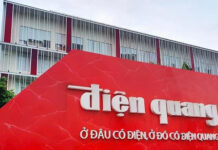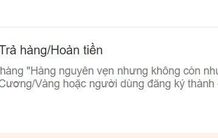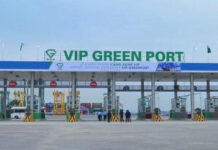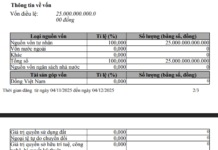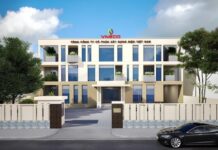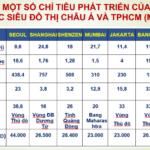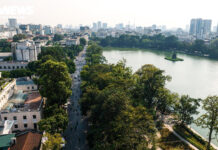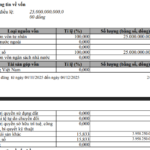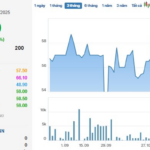In the context of major urban centers, particularly Ho Chi Minh City (HCMC), undergoing a significant transformation with strategic initiatives in planning and infrastructure development, the Transit-Oriented Development (TOD) model has emerged as a crucial approach. TOD aims to create modern, sustainable living spaces and optimize urban land use. At the seminar titled “The Journey to Realizing TOD Cities in Vietnam: Opportunities and Challenges” held on the morning of November 19, 2025, experts emphasized that TOD is not just a planning trend but also a catalyst for restructuring the real estate market. It requires synchronized legal frameworks, integrated planning, and effective capital mobilization mechanisms.
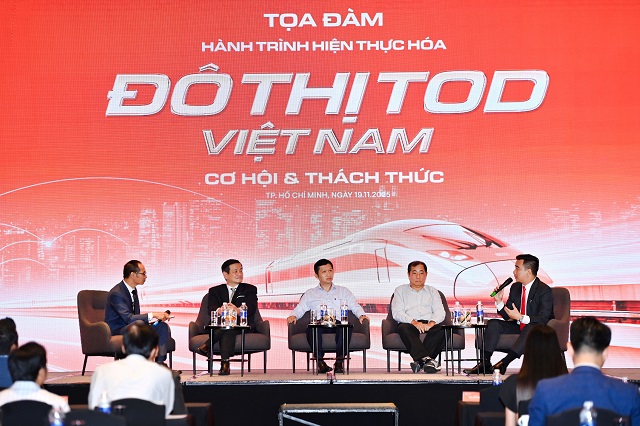
Experts discuss at the seminar “The Journey to Realizing TOD Cities in Vietnam: Opportunities and Challenges” on November 19, 2025.
|
TOD: An Inevitable Trend in the New Era
Speaking at the seminar, Dr. Nguyen Van Dinh, Vice Chairman of the Vietnam Real Estate Association (VNREA), highlighted that 2025 is a pivotal year for the real estate market, with numerous new laws taking effect to establish a more transparent and modern legal framework. Alongside key resolutions and administrative reorganizations, Vietnam is poised to develop megacities and new urban governance models. VNREA identifies TOD as an inevitable trend, requiring synchronized planning, transparent mechanisms, and close collaboration among the government, experts, and businesses to enhance infrastructure and urban development aligned with real needs.
Echoing this view, Mr. Pham Lam, Chairman and CEO of DKRA Group, noted that administrative boundary adjustments are ushering in a new development phase, while posing challenges in housing accessibility due to rising prices. Post-merger planning and transportation infrastructure will play a critical role in expanding development spaces. Future urban trends must shift decisively toward public transportation, enabling residents to access housing and workplaces within broader areas of 50–200 km, without relying on personal vehicles. This model not only reduces traffic congestion and pollution but also fosters a new lifestyle for residents.
TOD’s Impact on Restructuring the Real Estate Market
Mr. Vo Huynh Tuan Kiet, Director of Residential Project Marketing at CBRE Vietnam, observed that the Southern real estate market is entering a phase of robust restructuring, particularly as HCMC evolves into a megacity post-merger, with TOD serving as the primary development framework.
According to CBRE’s Q3 2025 report, a clear polarization is evident. While central HCMC faces limited new supply, the expanded HCMC area shows brighter prospects with significant additions from merged regions like Binh Duong and Ba Ria–Vung Tau. Mid-range projects priced below 60 million VND/m² along major transportation axes account for 75% of new supply in the Southern region. The expanded boundaries position HCMC as a megacity of over 20 million inhabitants with vast development potential, supported by regional infrastructure (Ring Road 3, Ring Road 4, highways, and metro lines) as the backbone for housing, commercial, and logistics growth. HCMC’s primary prices remain lower than Hanoi’s, offering mid-term growth potential, while demand for expert housing continues to expand.
Experts predict that in the coming years, the market will shift significantly toward suburban megacities with mature infrastructure suitable for compact urban development under the TOD model. Developers will focus on large-scale townships featuring green, smart designs and multifunctional complexes. Buyers are becoming more rational, prioritizing transparent legal frameworks, reputable brands, and comprehensive amenity ecosystems.
TOD is seen as a turning point, transitioning cities from “sprawling and motorcycle-dependent” to “compact and metro-connected,” creating satellite centers and enhancing property values around stations due to high pedestrian traffic and elevated planning standards. For TOD to operate effectively, CBRE representatives stressed the need for a transparent legal framework at the 1/500 scale, an authoritative TOD Steering Committee, and stable funding for land clearance.
Legal Frameworks and Integrated Planning: Keys to TOD Success
Dr. Architect Ngo Viet Nam Son emphasized that TOD can only be effective with a clear legal foundation and integrated planning from the outset. He noted that land along metro lines requires transparent legal mechanisms to support compensation, land clearance, and urban redevelopment.
Dr. Son criticized HCMC and Hanoi for their single-sector planning approach—building metros first and considering urban development later. As HCMC aims to expand its urban rail network to over 1,000 km, multisector integration and public-private partnerships (PPPs) are urgent. TOD not only optimizes land use and reduces reliance on personal vehicles but also creates a pedestrian-friendly, convenient living ecosystem.
Legally, Dr. Son identified this as the “biggest bottleneck” since TOD influences areas up to 800–1,200 meters around metro stations. Without mechanisms for compensation and land value sharing, cities struggle with land handover, hindering TOD formation. He proposed that future metro lines adopt a TOD mindset from the planning stage. Additionally, he suggested extending the metro line from Ben Thanh to Can Gio to create a “coastal TOD corridor” and planning Ring Road 4 to connect with the Cai Mep–Thi Vai port cluster, forming a closed TOD-logistics axis to drive urban-industrial-port development across the Southeast region.
Opportunities and Challenges in Implementing TOD in HCMC
During the panel discussion “TOD Cities: From Planning to Market,” experts affirmed that TOD implementation in HCMC is timely. Mr. Nguyen Tat Thang, Deputy Head of Technical Infrastructure Planning at the HCMC Department of Planning and Architecture, acknowledged that challenges in implementing Metro Line 1 were necessary for refining the legal framework for urban rail. He noted that Resolution 38/2025/NQ-HĐND, adopted by the HCMC People’s Council, provides a critical legal foundation for urban rail and TOD development.
According to the Department, HCMC is reviewing and leveraging land around metro lines, with Metro Line 1 offering over 160 hectares in Thu Duc City suitable for TOD. The city is also studying areas within 500–1,000 meters of Metro Line 2 to optimize land use. TOD projects along Ring Road 2 and the Ben Thanh–Tham Luong route are expected to complete procedures for groundbreaking by late 2025.
From an economic perspective, Dr. Dinh The Hien predicted that over the next decade, HCMC will witness significant population growth, driving demand for integrated TOD urban areas. Metro Line 1 has already demonstrated this trend, with property values rising around the line due to genuine housing demand.
Dr. Ngo Viet Nam Son stressed the importance of selecting the right investors and ensuring synchronized metro planning. He noted that HCMC operates as a multi-centered city, requiring priority for lines directly connecting to Binh Duong, Ba Ria–Vung Tau, and Can Gio to form a regional TOD network. Mr. Pham Lam added that TOD development demands clear regional strategies linked to major transportation axes like metros and high-speed rail, with stations along the North-South high-speed rail potentially becoming nuclei for new TOD clusters.
In summary, the TOD urban model is not only an inevitable trend but also an opportunity for HCMC and Vietnamese cities to leap forward in this new phase. The insights and recommendations from the event will significantly help policymakers, businesses, and investors shape appropriate strategies, effectively utilizing land and public transportation infrastructure.
– 14:23 19/11/2025
Vietnam’s TOD Urban Revolution: Unlocking the Potential of Next-Gen Megacities
The Transit-Oriented Development (TOD) model is an essential strategy for creating modern, sustainable living spaces and addressing land scarcity in major urban areas, particularly in Ho Chi Minh City. By integrating urban development with public transportation, TOD fosters efficient land use, reduces congestion, and enhances accessibility, making it a cornerstone for future-proof city planning.
Reclaiming Space for Water: A Sustainable Approach to Urban Planning
Following the merger with Binh Duong and Ba Ria – Vung Tau, Ho Chi Minh City will gain additional capacity to implement unified, synchronized, and effective flood control solutions. The root causes of the issue must be addressed with a comprehensive planning vision.












